Some endings are easy to predict. Throw a ball in the air and it will fall back down. Run off a diving board and you’ll land in a pool. Stick a thumbtack in a balloon and it’ll pop. But forecasting something as big and complex as the end of the universe? That’s not even a little easy.
People have been making predictions about the end of everything since the start of civilization. Scientists have been chasing this question for hundreds of years. And in all that time, they’ve proposed many possibilities — often with ominous names.
The Big Rip suggests the universe will eventually shred itself apart. The Big Crunch says everything will ultimately collapse on itself. In the Big Freeze, our universe slowly, coldly, fades to black. Other ideas suggest there may never truly be an end at all.
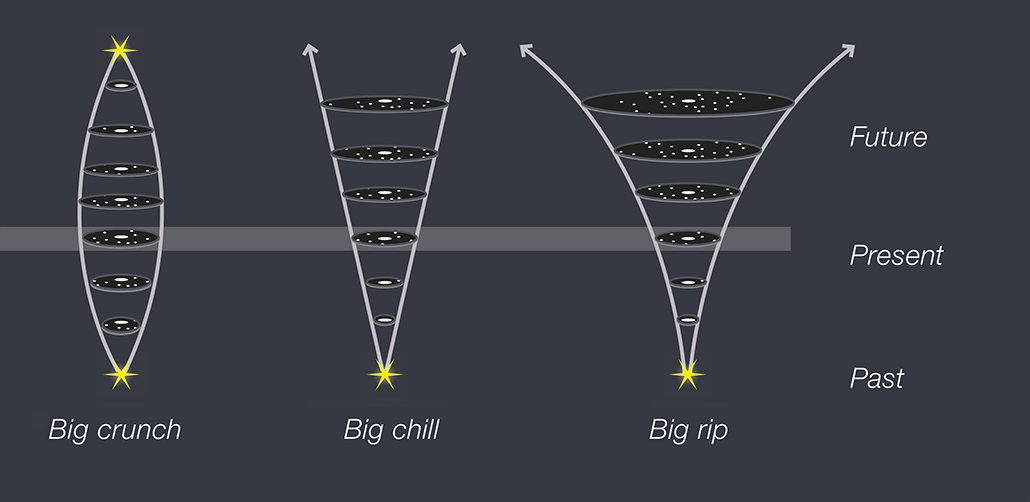
These predictions might sound wild. But they aren’t just imaginative speculation. They have been shaped by what scientists know about physics and their observations of distant stars and galaxies.
Ironically, centuries of research have not led to certainty. If anything, with time scientists have become less certain of the fate of our universe — and they often disagree.
“I think all bets are off,” says Arjun Dey. That is, it’s hard to be confident in any of the current ideas. But more research might uncover new clues. Dey is an astronomer at the National Science Foundation’s NOIRLab in Tucson, Ariz. There, he studies distant stars and galaxies using a telescope atop a mountain in the desert. It is called the Dark Energy Spectroscopic Instrument, or DESI.
Studying the end of the universe brings together science, uncertainty, curiosity and imagination. Those who do it say that it’s both unpredictable and fun.
Katie Mack agrees. “It’s fun to study something where the consequences are really big and interesting.” An astronomer in Canada at the Perimeter Institute in Waterloo, Ontario, she’s written a book on the destiny of the universe. It’s called The End of Everything (Astrophysically Speaking). Her research uses math and physics to study how galaxies form and change.
“If you’re a little kid playing with a chemistry set and you make an explosion, that’s exciting,” Mack says. “I feel like that. But I play with equations. And sometimes there’s an explosion — and it’s the whole universe!”
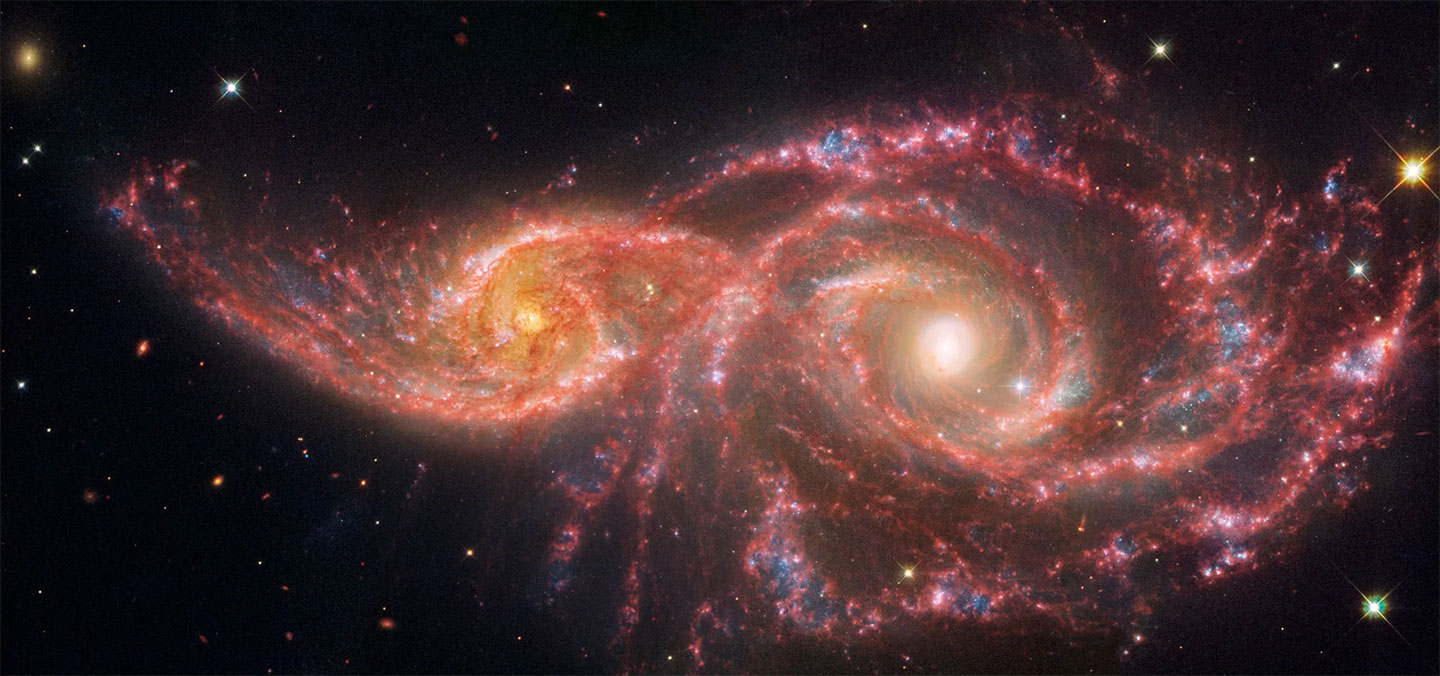
Things fall apart
The night sky might look calm and still. But our universe is always in motion.
Moons orbit planets, and planets orbit stars. Stars move together in giant galaxies. Some galaxies collide. Or they may stream away from each other at breakneck speed.
Because it takes so long for light to reach us from distant galaxies, when we look in the sky we’re actually looking back in time. The motions we see today happened long ago.
Foretelling the future of the universe requires knowing what pulls things together and what pushes them apart. Scientists know more about what pulls stuff together. That’s gravity.
Four hundred years ago, physicist Isaac Newton described how gravity behaves. Everything with mass attracts everything else with mass. That attraction is stronger for objects that are more massive and closer together. It’s what keeps people from flying off Earth’s surface and Earth from being flung from the sun.
Scientists still study gravity to predict how the universe changes. The rules of this law explain how planets in the solar system move around the sun. But for their orbits to be stable, those planets had to be arranged in just the right way. If they were moving too slowly or too close to the sun, they’d likely fall into it. If their orbits were too close to each other, they might smash together.
In a letter to a friend, Newton wrote that he thought only “divine power” keeps the whole fragile planetary system from collapsing.
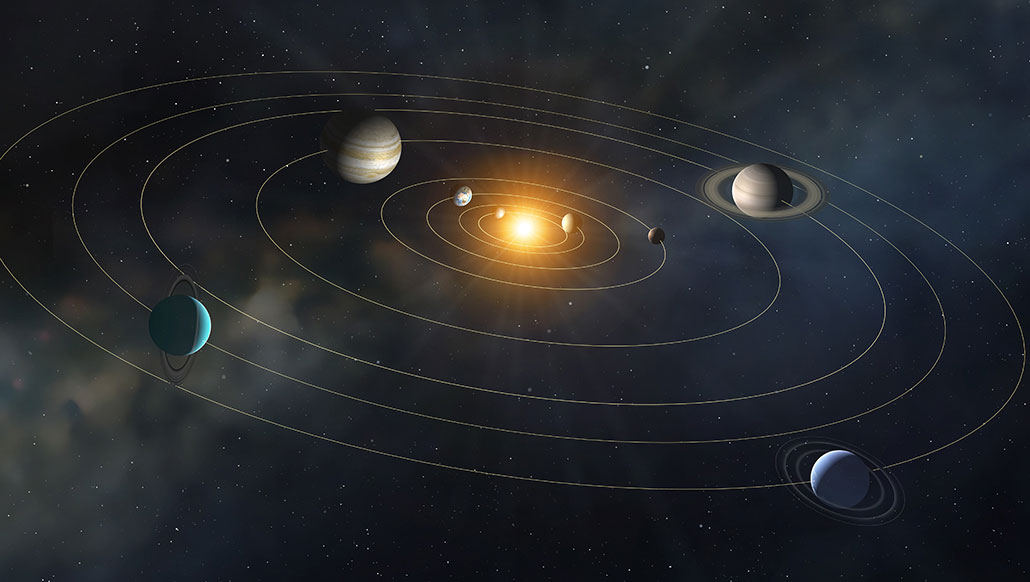
Later discoveries further shaped ideas about the fate of our cosmos.
One was the second law of thermodynamics, discovered in 1850. It says that energy moves from a warmer region to a cooler one — but never the other way round. If you put a warm muffin in a cool, insulated box, heat from the muffin flows into the air of the box. The muffin cools and the air warms until they reach the same temperature. Heat doesn’t go from a cool object to a warm one.
In much the same way, this law applies to messiness.
A raw egg, for instance, is nice and orderly. It has yolk and egg white in two distinct parts. Scrambling the egg moves it from ordered to disordered. But you can’t unscramble the egg by stirring more to make it orderly again. Likewise, you can stir up blue and yellow paint to make green paint. But you can’t stir green paint so that the two colors separate themselves.
You can see this law everywhere. And scientists explain it by noting that there are many, many more ways to be disorganized and unstructured than there are to be organized. So any system is more likely to end up in one of those disorganized, messy states.
In 1862, a scientist known as Lord Kelvin saw that the universe should follow this law, too. Today, the universe has some order. Stars are hot. The space between them is cold. Stars are grouped together in galaxies. But eventually all that stuff in the universe should spread out as much as possible. Energy will spread out so much that everything will cool down close to absolute zero.
And because movement requires energy, nothing will ever move again. The cosmos will just be fully, irreversibly messy.
“The universe will be in a state of ultimate rest,” Lord Kelvin wrote. This led to one possible end of everything, dubbed the “Heat Death of the Universe.” Others call it the “Big Freeze.”
Many scientists resisted Kelvin’s idea. They believed the universe would stay as it is forever.
But they were wrong.
There goes the cosmic neighborhood
The last century has completely changed what we know about the universe.
In the 1920s, two scientists independently discovered that the universe is getting bigger. Catholic monk Georges Lemaître made the discovery by studying math in physics equations. Astronomer Edwin Hubble did it by looking through a telescope.
Many of the lights Hubble saw through his spy glass were galaxies. And no matter which direction he looked, most galaxies were flying away from us. In fact, the farther the galaxy, the faster it moved away. This suggested the whole universe was expanding.
And here’s why.
Imagine the universe is a balloon covered with polka dots, where those dots are galaxies. As the balloon inflates, each dot moves away from every other one. And those dots that are farther apart move away from each other faster than dots close together.
The universe, it seemed, is not unchanging but growing. It must have been smaller yesterday, scientists reasoned, and even smaller the day before that. The universe must have had a tiny start in the distant past, Lemaître argued.
Scientists now call that moment the Big Bang. It’s when a tiny nothing blew up to jumpstart the universe. For that reason, Lemaître is often called the “father” of the Big Bang theory.
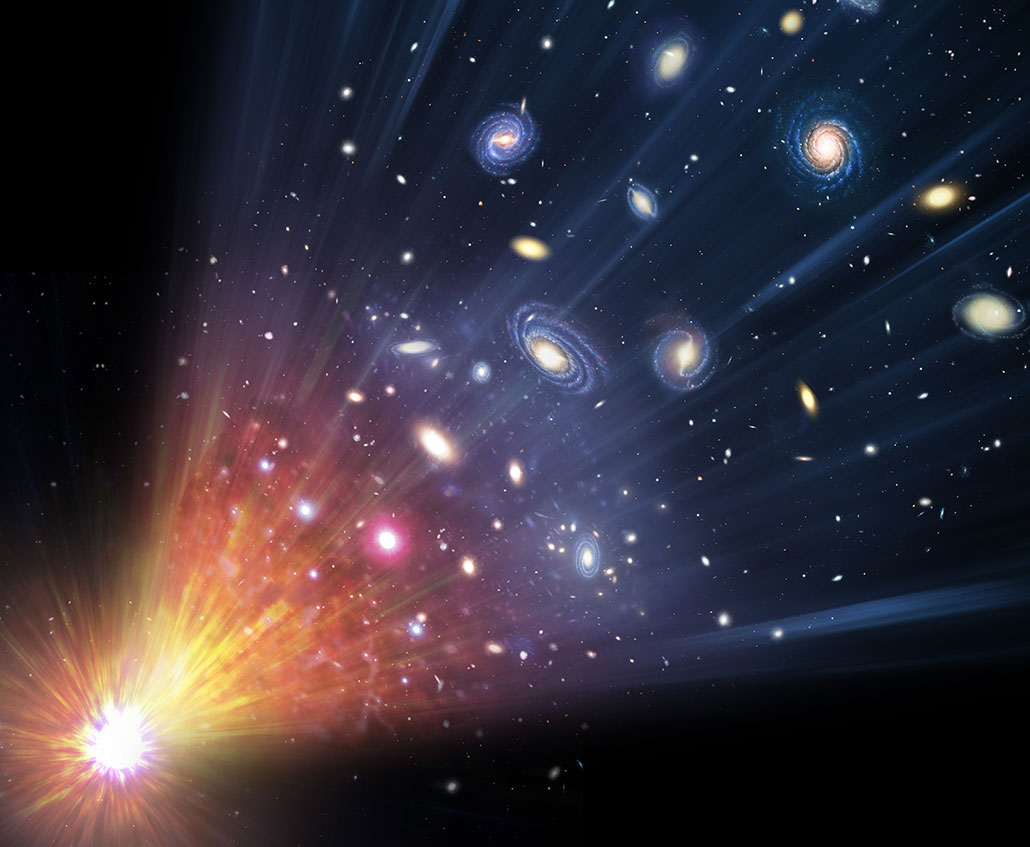
One problem with that theory is that no one knows what happened right before — or how it started. (But scientists continue to work on that.)
An expanding universe fits with Kelvin’s Big Freeze idea, in which everything spreads out. That idea remains popular, in part because it lines up with what scientists see in the universe today.
In this scenario, over trillions of years, stars and planets will form, die and fall apart. Some big stars could explode and become black holes, which eventually will gobble up everything else. Long after that, black holes might evaporate and vanish. The universe will grow big, cold and quiet — and stay that way forever.
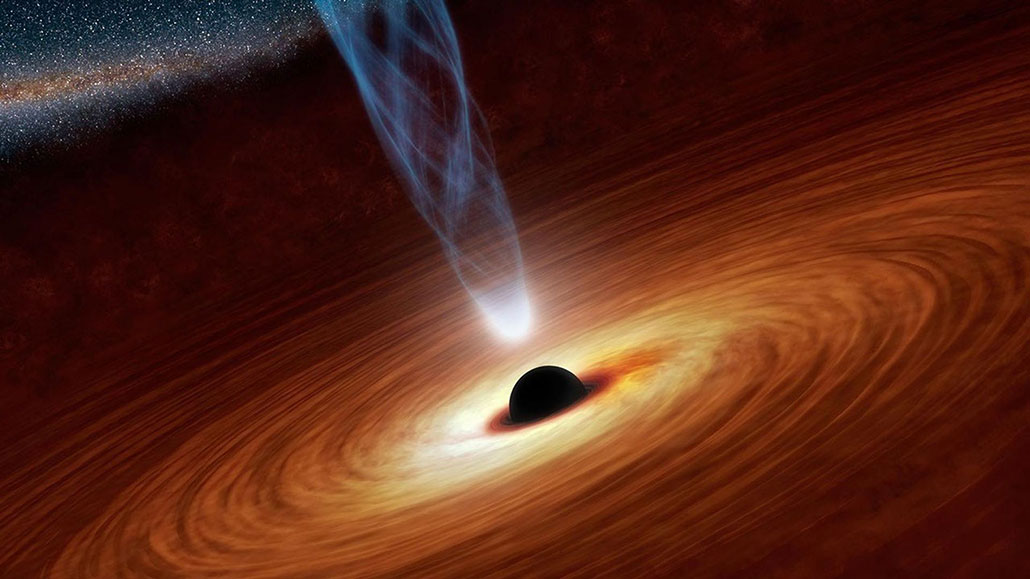
“People don’t like the idea of a heat death because it’s basically just too sad,” says Mack. But she’s not concerned. After all, it would happen a long, long time from now. This slow fadeout would unspool over 1040 years or so. That’s a 1 followed by 40 zeroes. In just 5 billion years (5 followed by 9 zeroes), the sun will swell so big that it engulfs Mercury, Venus and maybe Earth. No Earthlings will be around to see the Big Freeze. By then, people will have moved to another planet, evolved into a new species or gone extinct.
Defying gravity
Because of the Big Bang, by the end of the 20th century most scientists suspected that the universe was expanding. They thought that expansion was like a ball thrown in the air. A ball moves upwards — then slows down. Likewise, cosmic expansion was thought to be slowing down. After all, gravity is pulling all the matter in the universe together. That should eventually counter the initial explosive expansion of the Big Bang.
If the expansion slowed but never stopped, the universe would be infinite. If it slowed down and stopped, then the universe would have a finite size. And if it stopped and then reversed course, the universe would start to shrink.
That last idea is exciting and terrifying. Galaxies would crash into each other. Then stars and planets, too. The collisions would blaze like spectacular fireworks at the end of time. The universe would end as a dazzling ball of light and destruction.
This scenario is what physicists call the “Big Crunch.”
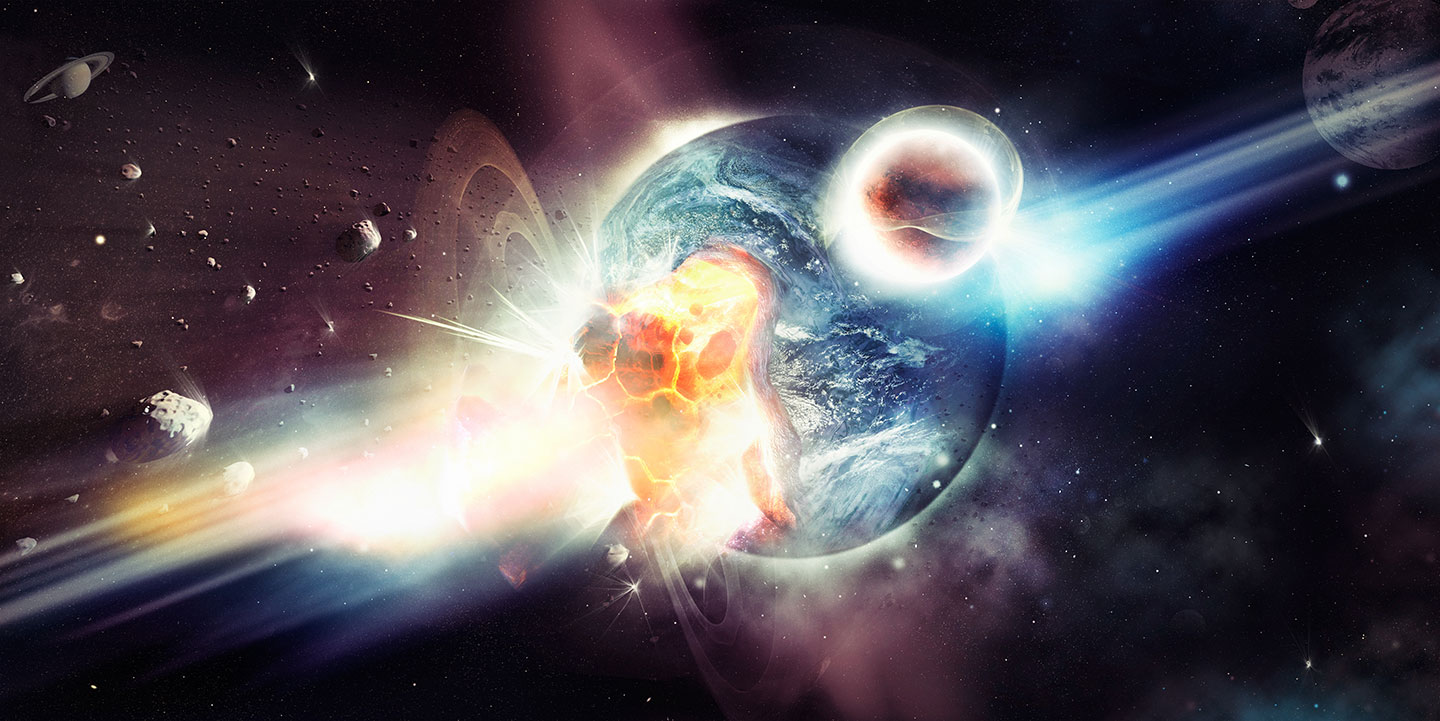
Some scientists have proposed that a Big Crunch might trigger another Big Bang. In that case, the whole universe would start over. Maybe our universe has expanded and contracted many times in the past and will keep doing so in the future.
In 1998, scientists tried to measure how much the expansion of the universe was slowing down. They pointed powerful telescopes at distant stars. But yet again, they discovered they were wrong. The expansion of the universe is not slowing. It’s actually speeding up. It was as if someone had thrown a ball in the air, but instead of slowing down, it sped up into space.
What could be driving an acceleration of the universe’s expansion? Something must be pushing everything away from everything else. Scientists now call this unknown thing “dark energy.”
It behaves “almost like it has negative gravity,” says Dey. “That’s the part that’s really mysterious.”
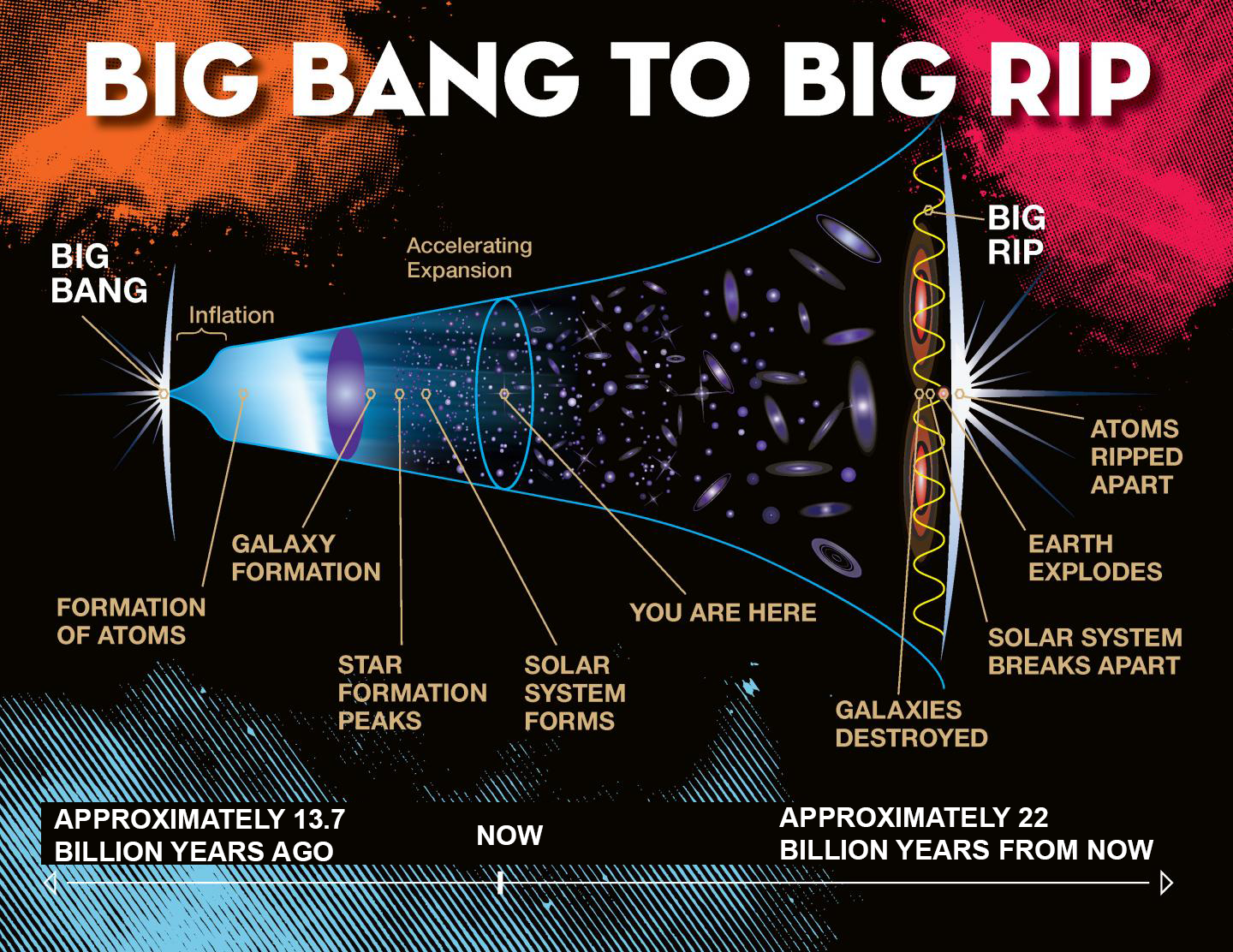
Dark energy apocalypse
Scientists still don’t know much about dark energy. They do know, though, that there’s a lot of it. It makes up some 70 percent of the everything in the universe.
“That’s very disturbing,” Dey says. “We don’t understand it.”
Understanding dark energy is important to knowing how the universe began and evolved. It’s also critical to predicting how the universe will end.
If dark energy pushes the expansion of the universe at the same rate, then a Big Freeze is most likely. As galaxies and stars zoom apart, their light will no longer be visible to each other. If Earth weren’t already obliterated by the death of the sun, we would see the lights in the night sky dim and eventually fade to black.
But that’s not the only possibility. Dark energy might speed expansion of the universe even more. If it expands too quickly, the fabric of reality could get ripped apart like a piece of paper. First galaxies would get shredded, then stars and planets. This is the idea behind the Big Rip.
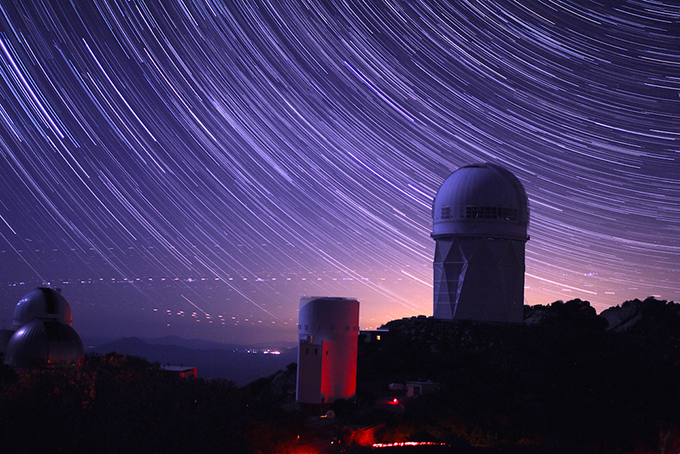
But maybe dark energy is changing in the other way. Scientists have found hints of this from DESI, that telescope in Arizona. It sits inside a white dome that stands like a futuristic lighthouse on a peak. In April 2024, researchers there unveiled data on how the universe has been expanding over the last 11 billion years.
Surprisingly, those data hint that dark energy may have been weakening over that time.
The DESI team has not confirmed that finding. But since early last year, they’ve studied exploding stars and bright patterns in the cosmos. They’ve studied the cosmic microwave background — the light echo of the beginning of the universe. And this has turned up even more evidence to support that idea of a change in dark energy.

Last month, the DESI team reported that all of its measurements fit better with the idea that dark energy is changing — not remaining the same. Dey wonders, “What was [dark energy] doing at earlier times?” If dark energy changes, then maybe the universe has had many phases where the expansion speeds or slows. If dark energy gets too much stronger, a Big Rip might become more likely. If it loses too much oomph, the universe might contract into a Big Crunch.
Or maybe dark energy is stronger and weaker at different points in time. Perhaps the universe expands and contracts in cycles, says Paul Steinhardt. He’s an astrophysicist at Princeton University in New Jersey. For decades, he’s studied how the history of the universe connects to the future. He investigates the idea that scientists might be wrong not only about the current universe, but also its beginning.
“You could begin with an infinite universe,” Steinhardt says. “It contracts, bounces — and 1744888846 we’re 14 billion years after the bounce.”
That idea doesn’t require a Big Bang. In fact, he doesn’t like the idea of a Big Bang because it doesn’t fully explain why the most distant reaches of the universe look the way they do. If the expanding universe we see today started with a bounce, he says, “you don’t need the bang.”

Stranger ideas still
A universe that grows and shrinks, over and over, isn’t even the wildest idea out there.
It’s not impossible, for example, that a blob of nothingness could suddenly appear somewhere in the universe and grow at the speed of light until it burns up everything. Mack, at the Perimeter Institute, calls this possibility the “bubble of quantum death.” It’s not very likely, she says. But thanks to the bizarre rules of quantum physics, we can’t completely rule it out. (Mack admits that she thinks about the bubble quantum death a lot.)
It’s also possible that what we call the “universe” is only one small cosmic neighborhood, says Andrei Linde. He’s a physicist at Stanford University in California. His work has shaped much of what we know about the cosmos.
Do you have a science question? We can help!
Submit your question here, and we might answer it an upcoming issue of Science News Explores
When the universe began, most scientists believe it expanded extremely quickly in a phase called inflation. But that growth spurt could have produced many “mini-universes,” Linde says. Think of them like the black and white hexagons on a soccer ball. We may live in one black hexagon and not see the rest.
As the universe — that is, the soccer ball — expands, “there will be a practically infinitely large black part,” Linde says. “And those who will live in a black part will never see a white part.”
Even as mini-universes grow, shrink or vanish, the entire universe could go on forever. “Some part of the universe ends,” Linde says, as “some part of the universe is being resurrected.” Maybe as one part of the universe vanishes, another bursts into existence. But the universe, as a whole, keeps going.
Scientists don’t know how to measure or test such ideas about the universe. So “at some level,” Dey admits, “they’re made up.”
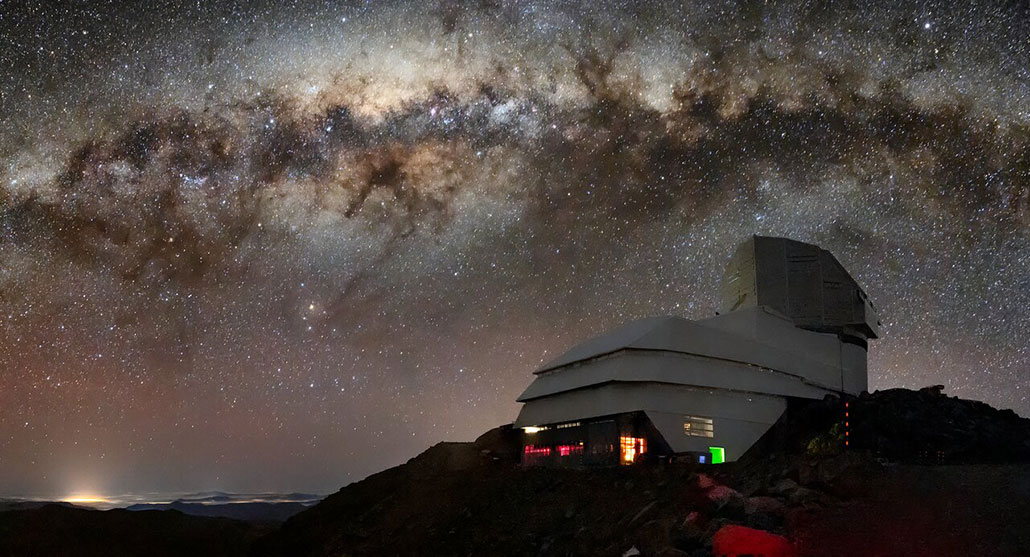
Contemplating fates of the universe gives scientists freedom to think about wild possibilities. It also shows how incomplete today’s theories are. “They’re limited by our imagination,” Steinhardt says. And just because scientists can observe something doesn’t mean they understand how it got that way.
All this creativity isn’t wasted, though. The end of the cosmos fits into the larger, enormous question of where the universe came from and where it’s going. And that question has led to remarkable discoveries (such as the expansion of the universe) and inspired the design of new telescopes, technologies and ideas.
“It tells you how useful imagination is in science,” says Dey. “Things have changed quite dramatically in our understanding of the universe.”




